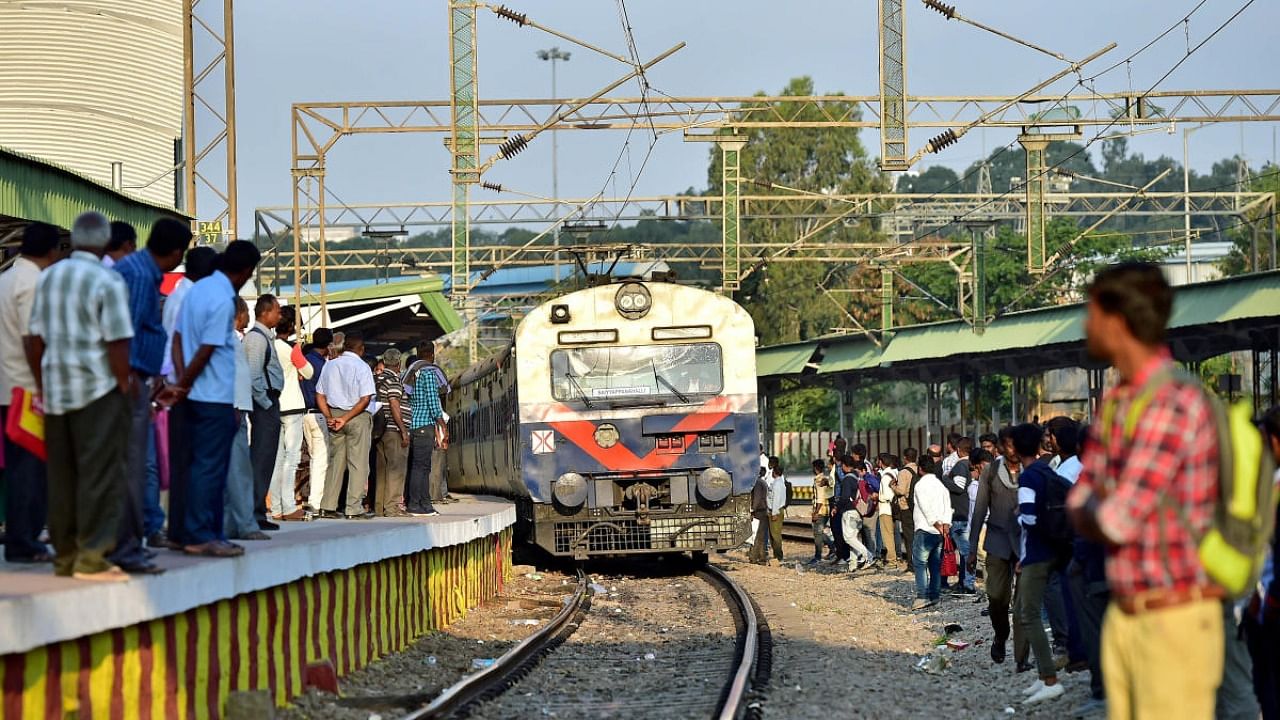
If you were to buy the platform ticket on any week day and enter Platform 2 of Bengaluru Cantonment Railway Station around 5.30 pm, you will find hundreds of people waiting for a passenger train to Whitefield.
If you strike a conversation like I did, you will find post-doctoral fellows from the Indian Institute of Science (IISc), the software engineer that owns a flat in Whitefield but works in the city and many others that use the train for daily commute. Nobody is interested in talking once the train arrives. There is standing room only as the train leaves the station.
There is a buzzing group on Telegram called SBC-ITPL with 2,108 members! No forwards allowed. Only live running status of trains between SBC (Bengaluru City) and ITPL (Whitefield).
Let us say you went home, had a good night of sleep and woke up bright and early and showed up at Hebbal Railway Station (you didn’t know there is such a thing?) by 6 am, you will not be able to park your motorbike because all parking spots are taken!
These are the folks that live around Hebbal and work in the mega IT parks on Outer Ring Road (ORR) and Electronics City and factories along the same stretch. No stress, no fuss as they chug along almost parallel to ORR where there is massive traffic jam already. Once they get off at Heelalige or some of them get on company provided vans to reach their office.
These were familiar scenes in Bengaluru, pre Covid. While there was not an official suburban train system, thousands of people figured out they could avoid stress, pollution and fuel costs by taking the train to work. Folks from Tumakuru, Kengeri depend on trains to get in and out of city.
Extensive rail network
The only reason they were able to do that was the fact that Bengaluru has an extensive railway network and many stations including Malleswaram, Kengeri, Baiyappannahalli, Bellandur and Carmelaram, just to name a few.
In 2014, there were protests by commuters at the railway tracks demanding a halt station at Hoodi; Bengaluru Central MP P C Mohan responded by contributing Member of Parliament Local Area Development Scheme (MPLADS) funds and thus was born the Hoodi Halt Station in 2016.
Earlier promises
When the Prime Minister said “this project was talked about for 40 years, but now we will complete it in 40 months” many of us that campaigned vigorously on the ground for suburban train #ChukuBukuBeku (by Citizens for Bengaluru and others) took that promise with a giant pinch of salt. Not because we don’t trust the Prime Minister, but because we heard such promises earlier by his own cabinet colleagues.
With all due respect to the Prime Minister, we cannot wait another 40 months. Unlike the Metro, suburban train is supposed to be deliver faster because it is expected to leverage the existing infrastructure.
It does not require much of land acquisition which not only costs a lot but also causes delays to any project execution. The Rail Infrastructure Development Company (Karnataka) Limited (KRIDE) must publish milestones for completion of various lines within the next 40 months. They must operationalise some routes in 2022, 2023 and 2024.
Table BMLTA
After many decades of neglect, our city is finally fixing the huge gaps in public transport. But the missing link, is the Bengaluru Metropolitan Land Transport Authority (BMLTA). We need comprehensive mobility planning and coordination now more than ever, to ensure agencies that run our bus, metro and train all work together. I call upon the Chief Minister to table the much delayed BMLTA legislation in the upcoming session.
(The author was co-founder of Citizens for Bengaluru that was instrumental for the #ChukuBukuBeku campaign and is now with Janaagraha)